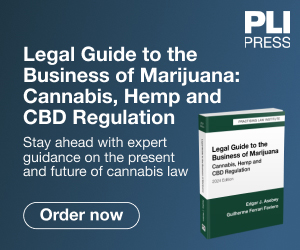MINISTRY OF HEALTH
DECREE 4 November 2019
Definition of maximum levels of tetrahydrocannabinol (THC) in food.(20A00016)
(OJ General Series n.11 of 15-01-2020
Source: https://www.gazzettaufficiale.it/eli/id/2020/01/15/20A00016/sg
THE MINISTER OF HEALTH Given the law of 2 December 2016, n. 242, bearing: «Provisions for the promotion of cultivation and the agro-industrial chain hemp ", published in the Official Gazette of the Republic Italian December 30, 2016, n. 304, and in particular art. 5; Given the law of 24 December 2012, no. 234, bearing: «General rules on Italy's participation in training and implementation European Union legislation and policies "; Having regard to Regulation (EEC) no. 315/1993 of the Council of 8 February 1993, which establishes Community procedures relating to contaminants in food; Having regard to Regulation (EC) no. 178/2002 of the European Parliament and of Council of 28 January 2002, which establishes the principles and general requirements of food law establishes the European Food Safety Authority and establishes procedures in the food safety; Having regard to Regulation (EC) no. 852/2004 of the European Parliament and of Council of 29 April 2004 on the hygiene of food products; Having regard to Regulation (EC) no. 853/2004 of the European Parliament and of Council of 29 April 2004 laying down specific rules in hygiene matters for food of animal origin; Having regard to Regulation (EC) no. 854/2004 of the European Parliament and of the Council of 29 April 2004 laying down specific rules for the organization of official controls on products of origin animal intended for human consumption; Having regard to Regulation (EC) no. 882/2004 of the European Parliament and of Council of 29 April 2004 on official controls aimed at check compliance with feed and food regulations food and animal health and welfare regulations, e further modifications; Having regard to the «Guidelines for official control pursuant to regulations (EC) no. 882/2004 and 854/2004 "(Understanding between the Government, regions and autonomous provinces of Trento and Bolzano on 10 November 2016); Having regard to Regulation (EC) no. 1881/2006 of the Commission dated 19 December 2006 which defines the maximum levels of some contaminants in food; Having regard to Regulation (EU) no. 68/2013 of the Commission on the catalog feed materials; Having regard to Regulation (EU) no. 1306/2013 of the European Parliament and of Council of 17 December 2013 on financing, management and on monitoring the common agricultural policy and repealing i Council regulations (EEC) no. 352/1978, (CE) n. 165/1994, (CE) n. 2799/1998, (CE) n. 814/2000, (CE) n. 1290/2005 and (CE) n. 485/2008; Having regard to Regulation (EU) no. 1307/2013 of the European Parliament and of Council of 17 December 2013 laying down rules on direct payments to farmers under the support schemes provided for in common agricultural policy and repealing regulation (EC) no. 637/2008 of the Council and Regulation (EC) no. 73/2009 of the Council and in especially the art. 32, paragraph 6; Given the delegated regulation (EU) no. 639/2014 of the Commission of 11 March 2014 which integrates regulation (EU) no. 1307/2013 of European Parliament and Council laying down rules on payments addressed to farmers under the envisaged support schemes from the common agricultural policy and amending Annex X to it regulation, as amended by delegated regulation (EU) no. 1155/2017 of the Commission; Having regard to Regulation (EU) no. 2015/2283 of the European Parliament and of the Council of 25 November 2015 relating to novel foods and which amends regulation (EU) no. 1169/2011 of the European Parliament e of the Council and repeals Regulation (EC) no. 258/97 of the Parliament European Council and Council Regulation (EC) no. 1852/2001 of the Commission; Having regard to Recommendation (EU) no. 2016/2115 of the Commission of the 1st December 2016 on monitoring the presence of Δ 9 -tetrahydrocannabinol, its precursors and other derivatives of cannabis in food; Having regard to the decree of the President of the Republic July 14, 1995, bearing: «Act of direction and coordination to the regions and provinces autonomous on the uniform criteria for the elaboration of the official control of food and drink '; Having regard to the circular note of the Directorate-General for Security Ministry of Food and Nutrition of 22 May 2009 labor, health and social policies on production e marketing of hemp seed products for use in the areas of human nutrition; Having regard to the opinion of EFSA (European Safety Authority food): «Scientific Opinion on the safety of hemp (Cannabis genus) for use as animal feed "(EFSA Journal 2011; 9 (3): 2011); Having regard to EFSA's opinion: «Scientific Opinion on the risks for human health related to the presence of tetrahydrocannabinol (THC) in milk and other food of animal origin "(EFSA Journal 2015; 13 (6): 4141); Considering that art. 2 of Regulation (EC) no. 178/2002 no it includes narcotic or psychotropic substances among foods under the United Nations Single Convention on Narcotic Drugs of 1961 and the United Nations Convention on Substances psychotropic of 1971; Considered that hemp grown exclusively for the production of fibers or for other industrial uses permitted by European Union legislation, other than those referred to in art. 27 of the decree of the President of the Republic 9 October 1990, n. 309, containing: «Consolidated text of the laws governing drugs and psychotropic substances, prevention, treatment and rehabilitation of the related states of drug addiction ", is not subject to the discipline of art. 26 of the aforementioned decree of the President of the Republic n. 309/1990; Considering that art. 32, paragraph 6, of Regulation (EU) no. 1307/2013 allows the cultivation in the European Union of varieties of Cannabis sativa L. as long as they are present in the common catalog of variety of plant species with a THC content not higher 0.2%; Considered that hemp seeds and hemp seed derivatives for use food have recorded a significant history of consumption as food before 1997 and, therefore, are not to be considered novel food pursuant to the aforementioned regulation (EU) no. 2015/2283; Considering that cannabinoids are not currently included among the undesirable substances in foods referred to in the regulation (CE) n. 1881/2006 of the Commission and subsequent amendments, and that Article. 5 of Regulation (EEC) no. 315/1993 of the Council allows Member States to adopt maximum limits for specific contaminants in food if they have not been adopted Community provisions; Considered, for the precautionary principle, the opportunity of analytically determine the sum of the substance Δ 9 -THC and of the inactive acid precursor Δ 9 -THCA-A which can give rise to substance Δ 9 -THC following thermal processes; It was deemed necessary to implement art. 5 of law 2 December 2016, n. 242; Given the decree of the general manager for hygiene and safety of food and nutrition 16 March 2017 of establishment, at the Ministry of Health, of the «working group for the objectives of referred to in art. 5 of the law 2 December 2016, n. 242 '; Having obtained the opinion of the Higher Institute of Health, rendered with note prot. 20675 of 18 May 2017, on the maximum limits of THC in the foods as a measure for risk management exposure; Obtained the opinion of the aforementioned working group through electronic consultation; Having heard the opinion of the Superior Health Council, expressed in the session of 9 October 2018; Having regard to the procedure pursuant to art. 5 of Regulation (EEC) no. 315/1993 which establishes community procedures relating to contaminants in food; Having regard to the communication to the Commission of the European Union carried out on 12 October 2018 pursuant to directive (EU) no. 2015/1535; decrees: Art. 1 Field of application 1. This decree establishes the values of the maximum concentrations (maximum limits) of total THC admissible in food for the purposes of official control.



















